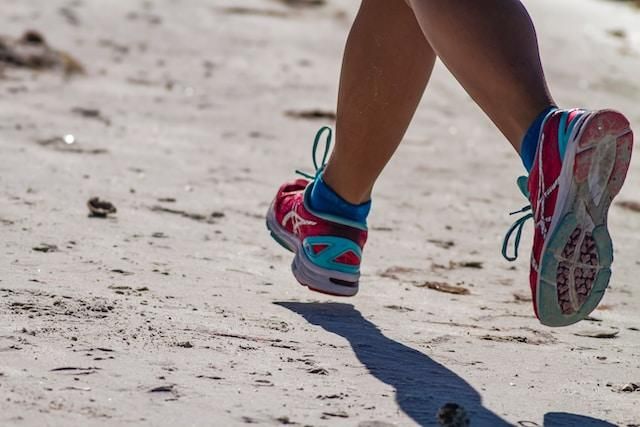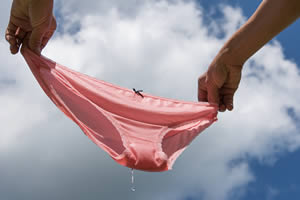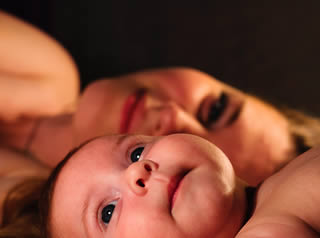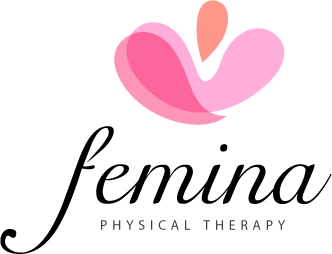
The Femina Physical Therapy Blog
Featuring original articles by our staff about current events and trends
Explore our insightful blog articles on pelvic health, where we delve into essential topics that empower and educate. From understanding pelvic floor disorders to strategies for conquering infertility, our content is designed for those seeking knowledge and support. We discuss the latest research, expert advice, and practical tips to enhance your well-being and foster a deeper connection to your body.
Featured From the Blog:
Running Mechanics and Pelvic Floor Health: The Impact of Footwear

Did You Know That Proper Footwear Can Improve Your Running Mechanics and Pelvic Floor Health?
How Do My Feet Impact My Pelvic Floor When I Run?
If you are a runner, you tend to look for ways to improve your running. If you’re thinking about starting up or returning to running, it can feel intimidating particularly if you have any symptoms related to pelvic floor dysfunction. This only complicates an exercise that, on the surface, seems fairly straight forward. There are some studies that have looked at how your feet can play a part in your pelvic floor muscle function while you run. And if you are looking to return to running postpartum, read on and also check out this article by one of our pelvic floor physical therapists.
Read more: Running Mechanics and Pelvic Floor Health: The Impact of...
Treating Bloating and Abdominal Distension: a Multi-Disciplinary Team

Why a Multi-Disciplinary Team is Best for Treating Bloating and Abdominal Distension
Bloating, abdominal distension, loose stools, constipation, abdominal or pelvic pain, fatigue, brain fog, weakness, nutritional deficiencies… these symptoms may be caused by a variety of gastrointestinal or pelvic conditions. If you are experiencing any of these symptoms, this article is a good place to start when deciding who to have on your care team, and what treatments can help!
Therapeutic Breast Massage in Lactation (TBML)

Therapeutic Breast Massage in Lactation Can Help Make Breastfeeding Less Painful
Breastfeeding is widely accepted as the normal standard for providing nutrition to newborns, however, many women who do not reach their breastfeeding goals. US national data stated that breast pain was a commonly reported reason for women weaning less than 1 month postpartum. Within that segment, 29% of women who participated in the study stated that “breastfeeding was too painful” to continue.
In the same study, 24% of women reported “breasts feel(ing) too full or engorged” as another reason to discontinue breastfeeding prior to 1 month postpartum.1 Currently, The American Academy of Pediatrics recommends exclusive breastfeeding of infants for the first six months of life. As physical therapists who treat patients with postpartum conditions, we are well positioned to make a big impact on patients with breastfeeding related pain and reduce barriers to continued breastfeeding!
- Details
- Written by: Heather Jeffcoat, DPT
- 7852 Views

"Girls’ Night Out" Showcased InControl Medical's Fabulous Products
Hosted by Femina PT at LA's Big and Tiny
Three expert speakers chatted and answered questions on female pelvic and sexual health. One of our major sponsors was InControl Medical, the creators of one of my favorite product lines for urinary, bowel and sexual dysfunction. They have three different products that are focused on these basic necessities of female health and wellness.
Read more: InControl Medical Products Featured at Girl's Night Out
- Details
- Written by: Staff
- 13065 Views

Stressed from the holidays?
Try some gentle yoga poses that can be done anywhere you have a little floor space for your yoga mat.
------------------
Cat/Cow
Cat/Cow is a dynamic yoga movement that links breath with movement. It flows through two poses that warm up the spine, relax low back muscles, hip muscles, pelvic floor muscles, and calms the nervous system.
- Details
- Written by: Staff
- 5595 Views

The Holidays can be stressful!
Fortunately, you can help the mind and body relax with these handy techniques.
Deep Breathing
Stress and chronic pain can lead to short and shallow breathing which adds tension to the diaphragm, abdomen, and pelvic floor. Encouraging the body to breathe deeply will unravel the tension inside the body, often held in between the ribs, in the low back, neck, shoulders, belly, and pelvic floor.
- Details
- Written by: Staff
- 7445 Views

Happy Veteran’s Day!
Today, we’d like to highlight an important women’s health issue for females serving in the military - a higher risk of developing both vaginal and urinary tract infections while deployed.
Females in the Military
According to the Defense Department, women now make up 20 percent of the Air Force, 19 percent of the Navy, 15 percent of the Army and almost 9 percent of the Marine Corps. As such a large population, increased awareness and advocacy is needed to ensure that our female troops are getting the best medical care possible.
Read more: Veteran’s Day | Deployed Military Womens Risk for Vaginal...
- Details
- Written by: Staff
- 6355 Views

Gentle Yoga Basics for Easing Into Yoga Practice
We Offer Gentle Yoga classes at the Montrose office.
For those of you who may be curious about what Gentle Yoga is, here are some basics:
What is gentle yoga?
In general, gentle yoga is a way of practicing yoga in order to balance the body and calm the nervous system. You will explore a variety of poses to help you with flexibility and strength, all while using breath and movement to calm the mind.
- Details
- Written by: Staff
- 9537 Views

November is Bladder Health Month, Which Means Preventing Urinary Incontinence!
Urinary incontinence is very common, affecting up to 1 in 3 women. Despite some common beliefs, leaking urine is not a normal part of aging and can be treated, especially with the help of a pelvic floor therapist. Today we’ll cover some common contributing factors that you can be mindful of to prevent urinary incontinence.
What is Urinary Incontinence?
Read more: Bladder Health Month | Preventing Urinary Incontinence
- Details
- Written by: Staff
- 18325 Views

Bladder Health Month and the Great American Smokeout - November 21st
In honor of both, today we are going to cover how smoking affects bladder health
Doctors have known for decades that smoking affects lung and heart health, greatly increasing risk of both lung cancer and heart disease. In recent research, they have been finding that smoking affects bladder health as well.













